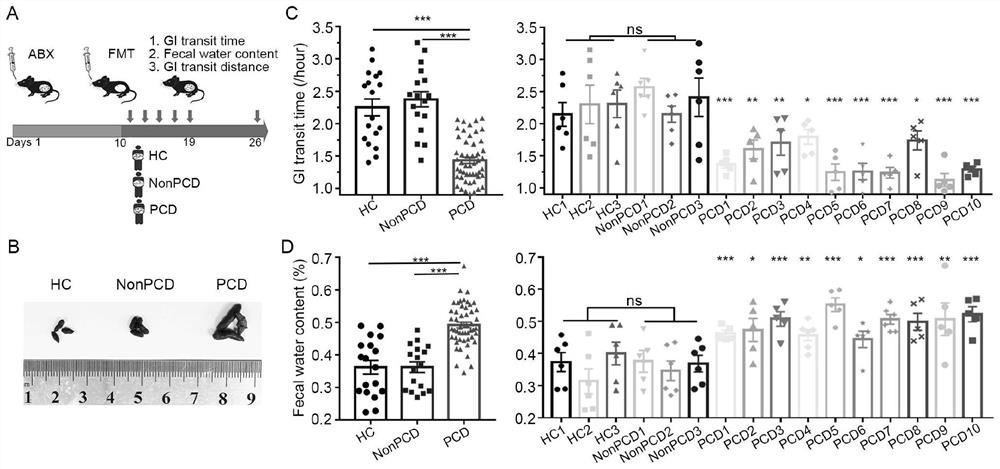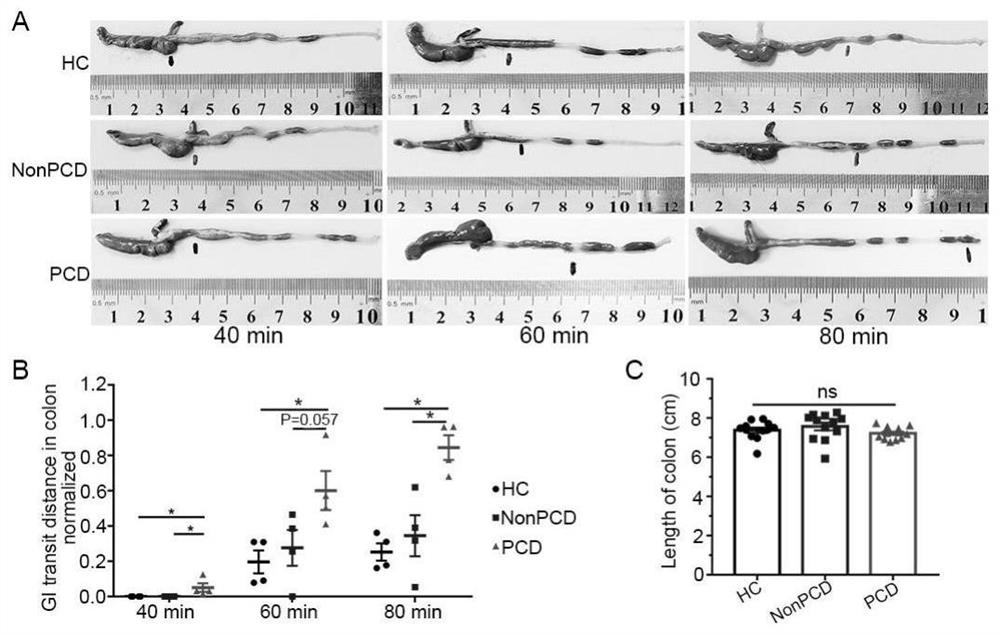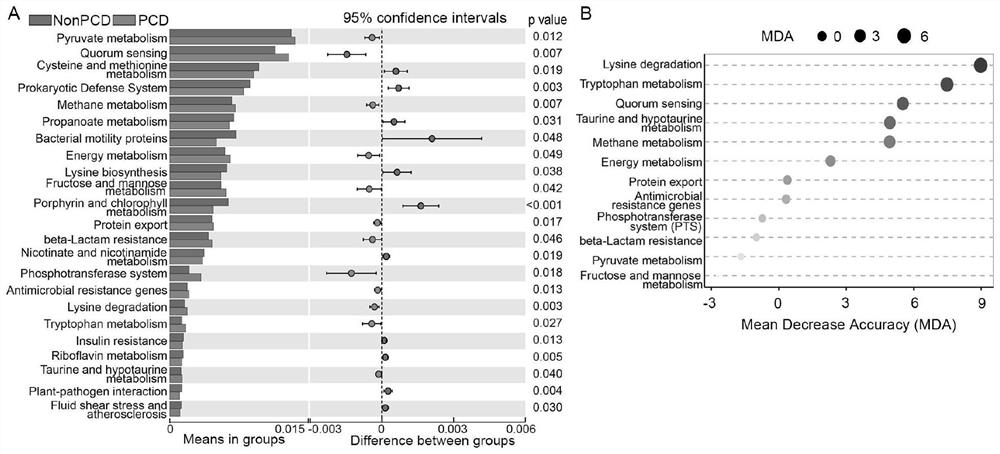Use of 5-hydroxytryptamine receptor subtypes 3 and 4 and antagonists thereof in treatment of post-cholecystectomy diarrhea
A post-cholecystectomy, serotonin receptor technology is applied in the field of serotonin receptor subtypes 3 and 4 and their antagonists, in the field of treating post-cholecystectomy diarrhea, can solve the problems of unknown efficacy in treating PCD, and achieve relief of diarrhea Symptoms in mice, strong pharmacological effects, and the effect of promoting colonic peristalsis
- Summary
- Abstract
- Description
- Claims
- Application Information
AI Technical Summary
Problems solved by technology
Method used
Image
Examples
Embodiment 1
[0042] Example 1: Constructing an animal model of diarrhea after cholecystectomy
[0043] Collect clinical patient samples, including normal population, postoperative non-diarrhea population and postoperative diarrhea population, add fecal bacteria preservation solution and cryopreserve at low temperature. A mouse model of humanized flora was constructed, and 5 antibiotics (vancomycin, neomycin, metronidazole, amphotericin B, and ampicillin) were orally treated for 10 days to construct germ-free mice, and then intragastric administration of different The feces bacteria of the group were collected for 5 times, and the diarrhea situation was evaluated by gavage with an indicator containing 5% carmine and 0.6% methylcellulose and calculating the water content of the feces 7 days after the end of the gavage ( figure 1 A). The results showed that the feces of mice with diarrhea were softer than those of the control group, indicating that the intestinal function had changed; the in...
Embodiment 2
[0045] Example 2: Causes of Post-Cholecystectomy Diarrhea
[0046] To investigate the specific intestinal segment where the increased intestinal transit time caused by the altered intestinal flora in the post-cholecystectomy diarrhea group occurred. In this study, the gross anatomy of different groups of mice was performed 40, 60 and 80 minutes after intragastric administration of the indicator agent, and the position of the indicator agent in the intestinal tract was clarified. The results showed that 40 minutes after intragastric administration of the indicator, the indicator of the two groups of mice in the control group had just reached the ileocecal valve, while the diarrhea group had passed through the ileocecal and entered the colon. At the same time, after 60 minutes and 80 minutes, the colon of the mice with diarrhea The ratio of the position of the indicator to the length of the colon is larger than that of the control group mice, and the general picture of the colon...
Embodiment 3
[0047] Example 3: Screening the bacterial flora enriched in the colon of mice in the diarrhea group
[0048] From the above results, it can be seen that the colonic peristalsis of mice with diarrhea significantly increased, suggesting that the lesion of diarrhea mainly occurred in the colon. Therefore, in this study, 16S rRNA sequencing was performed on the contents of the colon of mice in the three groups to analyze the differences in the composition of fecal bacteria. At the same time, because the intestinal flora has the ability to metabolize substances in the colon, such as bile acids, short-chain fatty acids and tryptophan, the metabolic small molecules produced play an important role in maintaining the normal function of the intestine. Therefore, this study conducted KEGG functional analysis on the analyzed flora data, and compared the functions of fecal bacteria in the non-diarrhea and diarrhea groups by T-test test. The result 3A showed the functions of many different b...
PUM
 Login to View More
Login to View More Abstract
Description
Claims
Application Information
 Login to View More
Login to View More - R&D
- Intellectual Property
- Life Sciences
- Materials
- Tech Scout
- Unparalleled Data Quality
- Higher Quality Content
- 60% Fewer Hallucinations
Browse by: Latest US Patents, China's latest patents, Technical Efficacy Thesaurus, Application Domain, Technology Topic, Popular Technical Reports.
© 2025 PatSnap. All rights reserved.Legal|Privacy policy|Modern Slavery Act Transparency Statement|Sitemap|About US| Contact US: help@patsnap.com



